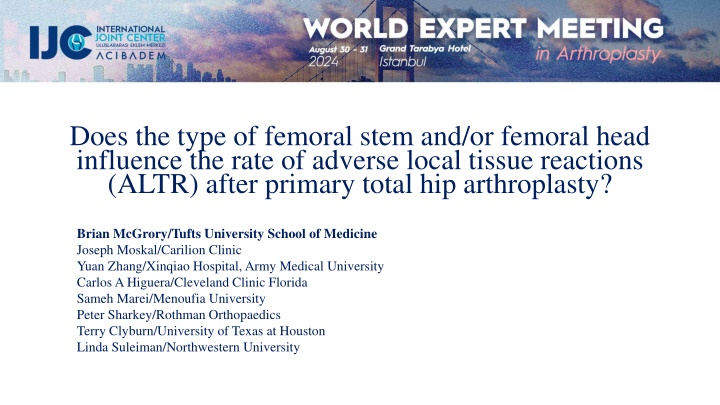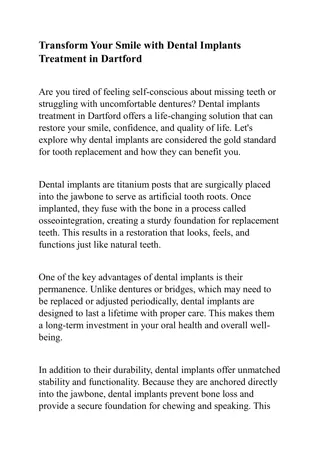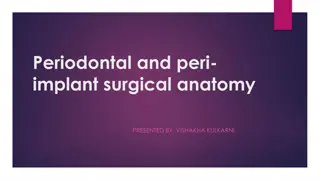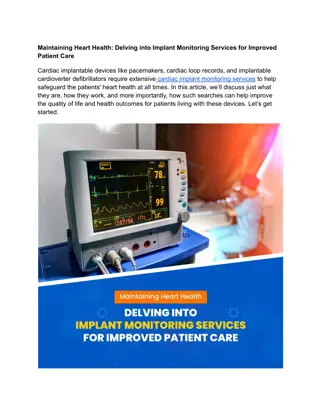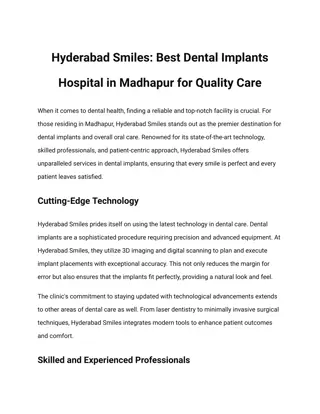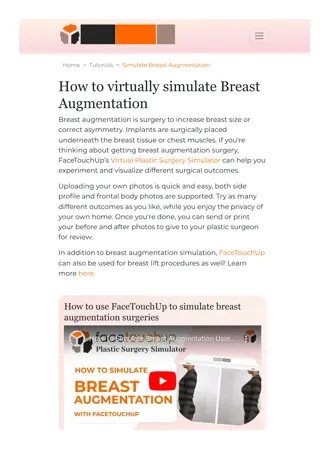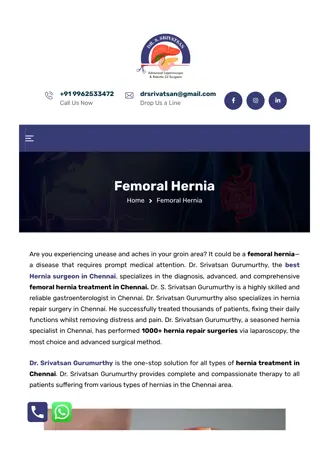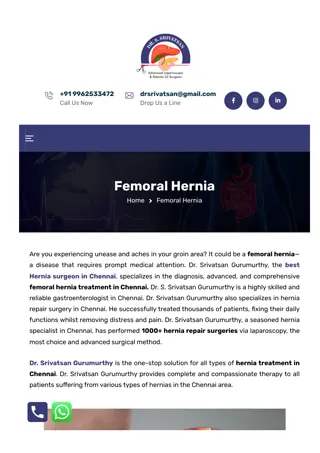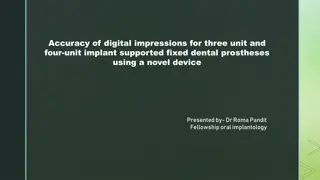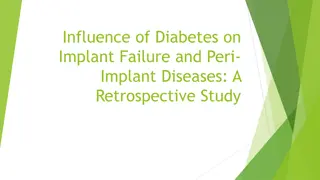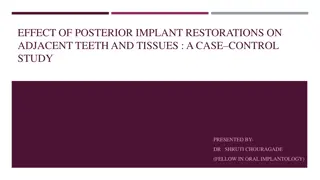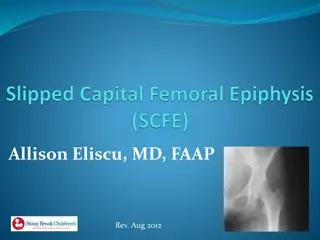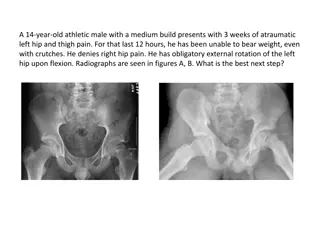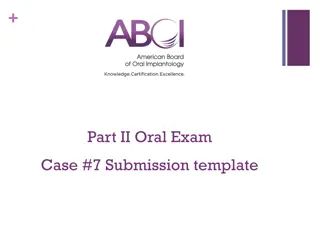Impact of Femoral Implant Characteristics on ALTR Risk
Adverse local tissue reactions (ALTR) after total hip arthroplasty (THA) can be influenced by femoral implant characteristics. Surgeons should consider non-cobalt alloy femoral heads, avoid cobalt alloy modular necks, and maintain suspicion for ALTR in high-risk cases.
Download Presentation

Please find below an Image/Link to download the presentation.
The content on the website is provided AS IS for your information and personal use only. It may not be sold, licensed, or shared on other websites without obtaining consent from the author.If you encounter any issues during the download, it is possible that the publisher has removed the file from their server.
You are allowed to download the files provided on this website for personal or commercial use, subject to the condition that they are used lawfully. All files are the property of their respective owners.
The content on the website is provided AS IS for your information and personal use only. It may not be sold, licensed, or shared on other websites without obtaining consent from the author.
E N D
Presentation Transcript
Does the type of femoral stem and/or femoral head influence the rate of adverse local tissue reactions (ALTR) after primary total hip arthroplasty? Brian McGrory/Tufts University School of Medicine Joseph Moskal/Carilion Clinic Yuan Zhang/Xinqiao Hospital, Army Medical University Carlos A Higuera/Cleveland Clinic Florida Sameh Marei/Menoufia University Peter Sharkey/Rothman Orthopaedics Terry Clyburn/University of Texas at Houston Linda Suleiman/Northwestern University
Why is this topic Important Adverse reaction to metal debris (ARMD), also known as adverse local tissue reaction (ALTR), is a potential complication after primary total hip arthroplasty (THA). Different implant designs have been linked with the pathogenesis of this complication. Therefore, it is important to establish what specific femoral implant characteristics put patients at risk of developingALTR.
Literature Review/Process Mesh terms used (("Hip replacement" OR "Total hip arthroplasty" OR "Arthroplasty, Replacement, Hip" [Mesh] OR "Artificial hip") AND ("Femoral stem" OR "Femoral head" OR "metal-on-metal joint prostheses" [Mesh] OR "prosthesis design") AND ("Adverse local tissue reaction" OR "ALTR" OR "Adverse soft tissue reaction" OR "Periprosthetic tissue reaction" OR "Pseudotumor" OR "Metallosis" OR "Metal ions" OR "Trunnionosis" OR "Tribocorrosion")) NOT (review [publication type] OR meta-analysis [publication type] OR systematic review [publication type]) Number of articles retrieved: 872 articles Screening: 307 articles The final number of publications: 48 articles
Findings from Literature We found that the risk of ALTR after THA surgery could be impacted by different characteristics of the femoral implant and therefore, surgeons should: 1. Strongly consider a non-cobalt alloy femoral head (ceramic or oxinium) in any metal on polyethylene (MOP) THA with a larger head (36mm or greater), high offset, or in a higher risk stem or taper. 2. Avoid cobalt alloy modular necks. 3. Maintain a high level of suspicion for ALTR in patients with a high-risk implant that has been previously placed (cobalt alloy modular neck, implants recalled or discontinued because of ALTR concerns, implants shown in the literature to be at risk)
Question: Does the type of femoral stem and/or femoral head influence the rate of adverse local tissue reactions (ALTR) after primary total hip arthroplasty?
Rationale: We performed a systematic review of the literature and identified 48 studies discussing the impact of different femoral stem and head characteristics on the incidence of symptomatic and asymptomatic ALTR. Among different factors influencing the rates of ALTR after primary THA are: - Cobalt-chromium femoral heads have a higher incidence of ALTR, especially with an increased head diameter. - Neck-stem junction modularity increases the risk of ALTR. Cobalt-alloy modular necks are prone to corroding at the neck-stem junction. - Different stem (TMZF material, ABG II, M/L, and V40 taper) and head (Low-friction ion treatment) designs have been recalled or identified at high risk for ALTR. Patients with these THA systems should be closely monitored. - A greater femoral neck offset has also been linked with higher ALTR rates.
Question: Does the type of femoral stem and/or femoral head influence the rate of adverse local tissue reactions (ALTR) after primary total hip arthroplasty? Response: Yes. The incidence of adverse local tissue reactions (ALTR) is higher with the use of cobalt chromium femoral head compared to ceramic femoral head. It is important to note that other factors also affect the rate of ALTR that includes metal-on-metal bearing surface, modularity of femoral stem, femoral head size and the type of femoral stem.
